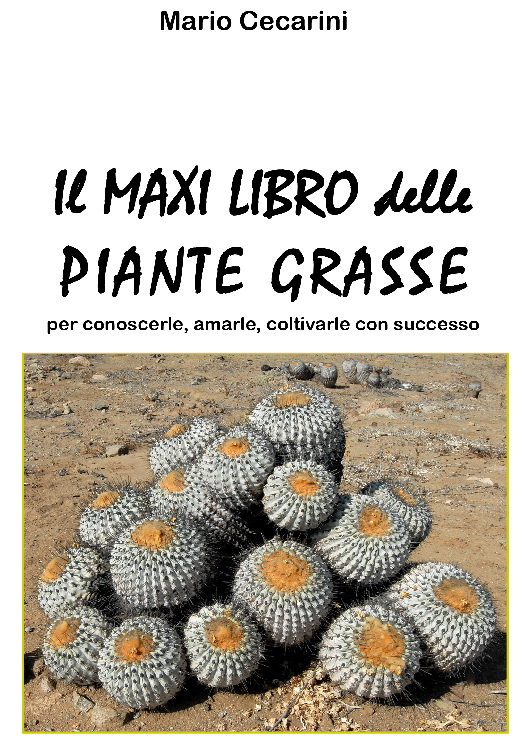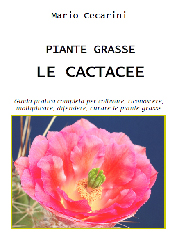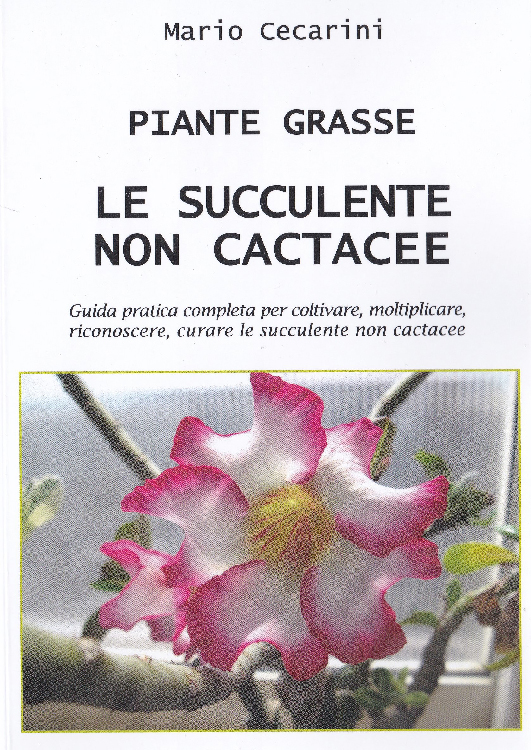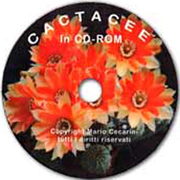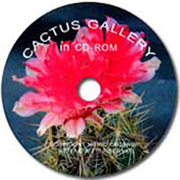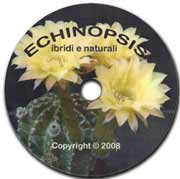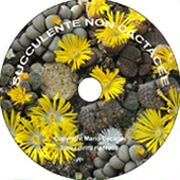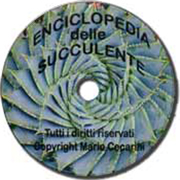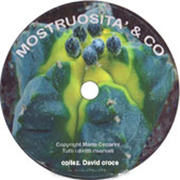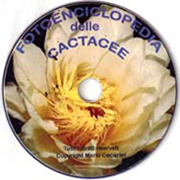.
by Mario Cecarini
 1 Damaraland
1 Damaraland
2 Gran Nama Land:
a-Luderitz; b-Gran Nama Land settentr.; c-Gran Nama Land merid.
3 Gran Nama Land sud. orientale:
a-Monti Karas; b-Warmbad
4 Provincia del Capo nord-occiden.:
a-Piccolo Nama Land - Piccolo
Bushman Land; b-Grande Bushman Land;c-Gordonia
5 Provincia del Capo centrale:
a-parte occid.; b-parte centrale
6 Provincia del Capo settentr.:
a-Distretto di Kenhardt; b- distretto di Prieska
7 Transvaal e zone confinanti:
a-Provincia del Capo nord-occid., Grequaland occid.
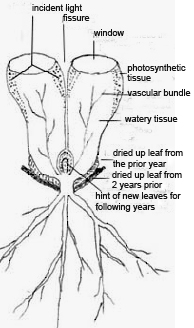 Lithops are surely the most loved and widely cultivated plants among Mesembryanthemums. Stemless and extremely succulent, once they reach maturity they develop a fissure between the two leaves from which the flower later emerges. The apex of these leaves (lobes) is generally flat, the surface may be smooth or marked by tubercles or wrinkles, with translucent or opaque spots varying in colour, dimension and pattern, called “windows”, through which light penetrates the leaves to activate the photosynthetic process.
Lithops are surely the most loved and widely cultivated plants among Mesembryanthemums. Stemless and extremely succulent, once they reach maturity they develop a fissure between the two leaves from which the flower later emerges. The apex of these leaves (lobes) is generally flat, the surface may be smooth or marked by tubercles or wrinkles, with translucent or opaque spots varying in colour, dimension and pattern, called “windows”, through which light penetrates the leaves to activate the photosynthetic process.
During the rest period many species hunker down below soil level camouflaging with it, and this behaviour is a typical example of perfect adaptation to a specific habitat. Flowers are hermaphrodite and white or yellow in colour. In the wild they bloom from September until November, right after the wet season, when growth has stopped.
The numerous seeds are contained in woody capsules which are divided into 5 or 7 compartments, and keep ripening until March of the following year when they are finally ready to germinate. At the base of the pair of leaves we find the vegetative apex, which will produce a new pair of leaves the following year.
 The main areas of distribution are the warm regions of southern and southwestern Africa (Namibia), where the lows usually stay above zero all year round. The most significant among these in terms of the number of wild specimens found are the Karas mountains and Warmbad in Gran Nama Land as well as Grand Karoo and Bushmanland in Cape Province.
The main areas of distribution are the warm regions of southern and southwestern Africa (Namibia), where the lows usually stay above zero all year round. The most significant among these in terms of the number of wild specimens found are the Karas mountains and Warmbad in Gran Nama Land as well as Grand Karoo and Bushmanland in Cape Province.
These territories are characterized by low air and soil humidity, intense solar radiation and low rainfall (less than 200 mm per year) but abundant dews. The mean temperature in January (midsummer) is around 25°C (77°F), while in July (midwinter) is between 10 and 15°C (50/59°F), depending on the region. The maximum relative humidity in the different regions varies from 50 to 80 percent, the minimum from 25 to 65 percent. The soil is mainly quartziferous, granitic or calcic.
Cultivation. In order to grow Lithops successfully, you need to be mindful of their rest period (December to April), their growing period (May to August) and the flowering period (September to November). A greenhouse can be useful as long as it is well-ventilated and plants are placed near the roof so that they can enjoy sunlight and warmth. The ideal minimum winter temperature is about 6°C (43°F).
They can also be grown on a south-facing windowsill or porch with large windows, by placing the pots in polystyrene boxes filled with gravel, ensuring that the pots are buried in gravel nearly to the rims. Although these plants prefer growing in full sun, they are susceptible to sun scorch at the beginning of the warm season. Therefore, exposure to direct light should be gradual if you want to avoid the risk of leaves drying out and being depleted of their water content.
Sowing. The best period for sowing Lithops is during March to April, using a prevalently mineral substrate. Fearn suggests 2 parts of coarse sand, 1 part of peat, 1 part of garden soil; alternatively sterilized garden soil and sand in equal parts. Temperature may vary from 14 to 25°C (ideal is 15°C) with good soil and air moisture. After seed emergence (normally after 7-10 days, but in some cases it may take up to 30) it is essential to improve ventilation so as to reduce humidity and avoid sudden changes in temperature. Seed viability is about 8 years, with the maximum germination rate occurring after 3 or 4 years approximately. If seeds are too fresh germination rate is low, with the exception of the species Optica which has to be sown within a year after seed production.
Before prickling young seedlings, wait at least one year or more, especially if seeds have been sown in 10 cm square pots. Your plants should soon be accustomed to direct light. Flowering occurs after three years. Lithops are not self-fertile therefore it is essential to cross pollinate them, bearing in mind that plants belonging to the same species have a tendency to hybridize within themselves. Capsules need to be harvested six months after ripening.
Cuttings. With a cutter divide the two lobes getting rid of residual tissue from old leaves. It is necessary that, in doing so, a short peduncle remain attached to each section. The latter has to be gently pressed into dry sand for rooting, possibly with the addition of some carbon powder. You should lightly moisten the sand after some twenty days, when root formation begins.
Soil. In nature, these plants live in soil containing virtually no humus and, as a result, no fungi against which they have no defense. That is why you must avoid common potting mix, generally containing too much organic matter, and use purpose made mixes instead. Here are a few examples: 2 parts of quartz sand, 1 part of garden soil or 3 parts of sand and 1 part of leaf mould. Top up with a layer of grit which is useful to prevent root collar from rotting.
Watering. Apply water sparingly but thoroughly, until it comes out of the drain hole. Start watering in April when the new pair of leaves emerges. When flowering is over (around October), stop watering as the plant is about to enter dormancy. Plants overwintering inside a glasshouse resent high humidity, those inside a house suffer from excessive heat. It is useful to spray water over plants in the evening during the warm months. Use non-calcareous water such as rainwater, so long as it is not polluted.
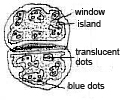 Identification keys. An identification key is necessary for the taxonomic identification of a certain plant. A key may be dichotomous, numerical or by elimination. To the latter belong the ones devised by De Boer & Boom, by Fearn, and by Boom. The first type is considered the best, the second is easy to apply although it does not allow varietal determination, the third is rather difficult to use. Those who wish to utilize Fearn's identification key may download the attached program for Microsoft Windows by clicking here.
Identification keys. An identification key is necessary for the taxonomic identification of a certain plant. A key may be dichotomous, numerical or by elimination. To the latter belong the ones devised by De Boer & Boom, by Fearn, and by Boom. The first type is considered the best, the second is easy to apply although it does not allow varietal determination, the third is rather difficult to use. Those who wish to utilize Fearn's identification key may download the attached program for Microsoft Windows by clicking here.
I strongly recommend all Lithops enthusiasts to read the book "Lithops-flowering stones" by Desmond T. Cole; it represents the most authoritative and comprehensive work ever written on this widely popular succulent genus.
.








